[ad_1]
There’s a jokey cultural shorthand for center age—comically embarrassing midlife crises and the sense that one’s desirability has plummeted. However midlife will be the second we solid off the elements of ourselves that by no means match. Whereas it could be true we come of age all through our lives, stepping bravely, or tentatively, into new identities because the outdated ones chafe, midlife is perhaps the richest time for locating that more true self, a time after we’re younger and outdated, all of sudden.
As I wrote the pages that might turn into my novel The Wrong Kind of Woman, I noticed that my character Virginia, newly widowed and adrift, must rethink her entire life. She’s all of the sudden pressured to see herself, her husband, and her neighborhood—the standard, Animal-Home-like males’s faculty the place her husband taught—in an unflattering new mild. That’s partly as a result of the novel takes place in 1970-1971, with a setting loosely primarily based on Dartmouth Faculty, pre-coeducation, with the background pressures of the Vietnam Conflict, anti-war scholar protests and extra radical activism, and the rising second wave of the ladies’s motion: a time of nice change. However it’s additionally as a result of Virginia has reached center age,
As my character Virginia helps her new mates convey change to their neighborhood, she begins to find a more true id and a method ahead for the remainder of her life. At forty, she’s come of age.
I really like discovering characters in different novels who’ve achieved the identical. Listed here are some notable midlife coming-of-age novels.
*
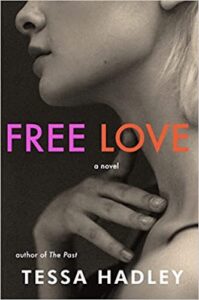
Tessa Hadley, Free Love
(Harper)
British novelist Tessa Hadley writes attractive evocations of characters in any respect ages, however particularly girls in midlife. Free Love follows forty-year-old Phyllis Fischer, who makes a seemingly foolish and precipitate determination: After a kiss with a twenty-something household good friend, she leaves her suburban life and her husband and children behind. Inside days, she’s entered a really totally different life in swinging-Sixties-grungy-mod London. Although this new life takes some turns for the more serious, Phyllis finds her personal method, twenty years after marrying, having kids, and dwelling as a suburban spouse.
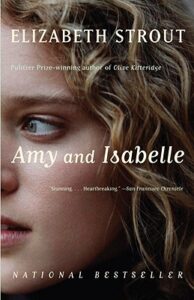
Elizabeth Strout, Amy and Isabelle
(Classic)
Elizabeth Strout’s debut novel, which roves between the views of a mom and teenage daughter, is a twin coming-of-age novel. Single mother Isabelle and sixteen-year-old daughter Amy stay within the small and gossipy New England mill city Shirley Falls. It’s the late Sixties, and Isabelle is set to stay a correct life, regardless of her singlehood. As teenage Amy (naturally) rebels in opposition to Isabelle’s repressive strictures, falling in love with the unsuitable man, Isabelle in flip struggles, resentful of Amy and unable to determine the way to guardian her. The 2 transfer by way of a tough summer time. By summer time’s finish Isabelle, the mother, is the extra modified character, the one who sheds her false outdated self and actually begins to stay, and to like her daughter unconditionally.
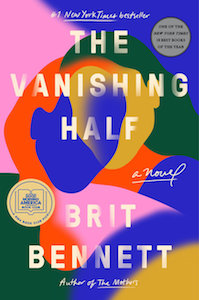
Brit Bennett, The Vanishing Half
(Riverhead)
Brit Bennett’s The Vanishing Half is an absorbing household saga, in addition to a penetrating have a look at racism and colorism. On the coronary heart of the story are Desiree and Stella Vignes, twins who develop up in Nineteen Fifties Mallard, Louisiana, a tiny all-black city the place everyone seems to be light-skinned, a city that’s not on any map. At sixteen, they run away to New Orleans, the place Stella is mistaken for a white lady in a job interview, and he or she decides to vanish from her life, taking over a white id. And Desiree, after transferring to Washington, DC, marrying a black man, and having a child, flees dwelling to Mallard when the husband turns into abusive. Although Desiree’s and Stella’s lives have vital parallels—every has one daughter, across the similar age—they unspool in reverse methods, Desiree mired in her outdated life in Mallard, and Stella anxiously dwelling a lie, although a moneyed, southern-California lie. Till they reunite in midlife, neither twin can develop up. For Stella, meaning dwelling a extra truthful life, and for Desiree, it means leaving Mallard behind, and to start finally to consider her future.
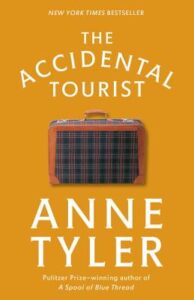
Anne Tyler, The Accidental Tourist
(Classic)
Anne Tyler is perhaps the grasp of the midlife coming-of-age novel (see additionally Respiration Classes, Ladder of Years, Again When We Had been Grownups, The Unintentional Marriage, The Newbie’s Goodbye). In The Unintentional Vacationer, Baltimorean Macon Leary is adrift after the violent loss of life of his twelve-year-old son. His spouse has left him—even earlier than their son’s loss of life, Macon’s sad rigidity, rule-making, and uptightness had begun to drive her away. Kind of alone on the planet, Macon sits at dwelling writing journey guides for businessmen (like him) who hate to journey, his solely good friend his badly behaved canine. After resisting overtures from Muriel Pritchard, a lonely and odd younger canine coach, Macon offers in and begins to attach along with her. Macon slowly and painfully comes of age as a extra entire, loving self, a journey that’s by turns grief-suffused and laugh-out-loud hilarious.

Emma Straub, This Time Tomorrow
(Riverhead)
In This Time Tomorrow, Alice Stern, a born-and-bred New Yorker whose life has stalled and whose beloved dad is dying, will get too drunk on her fortieth birthday in an underground subway bar. She wakes up within the mid-90s as her sixteen-year-old self in her childhood dwelling on the Higher West Facet. Straub’s newest novel is a time-travel story—Alice goes forwards and backwards between her forty-year-old and sixteen-year-old selves, attempting on barely totally different identities every time. By way of these Groundhog Day-ish episodes, Alice grows and adjustments, from caught and unhappy to a happier, richer sense of herself.
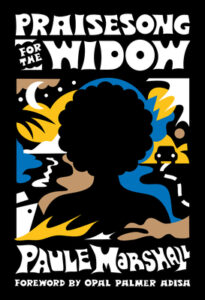
Paule Marshall, Praisesong for the Widow
(McSweeney’s)
The timeframe of Paule Marshall’s brief novel Praisesong for the Widow runs just a few days: middle-aged widow Avey Johnson, disturbed by a dream of her long-dead great-aunt, abruptly decides to go away the Caribbean cruise she’s taking with two mates, after which will get caught on the island of Grenada earlier than she will fly dwelling to suburban New York Metropolis. However what occurs on that brief island keep—an encounter with historic African dances that Avey acknowledges from long-ago visits to her great-aunt’s island dwelling off South Carolina—brings Avey again to her childhood self, and ahead to her future. As Avey’s reminiscence roams over a long time, she realizes that the limitless work of striving to turn into “respectably” middle-class, regardless of crushing racism, made Avey and her husband Jerome strangers to one another, and made Avey a stranger to herself. She returns dwelling with a really totally different future in thoughts.
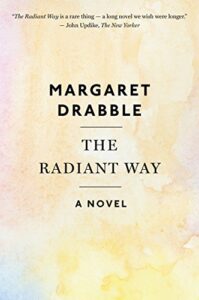
Margaret Drabble, The Radiant Way
(Harper)
Margaret Drabble’s 1987 novel The Radiant Means is a giant social-issues novel with an expansive timeframe, 1979 to 1986, following three mates of their mid-forties: Liz, a psychologist, outwardly probably the most profitable along with her profession, huge home, BBC-exec husband, and children; Esther, an artwork historian; and Alix, who teaches in a girls’s jail. All through, there’s a number of commentary, as Drabble depicts Thatcher-era England as a bleak wasteland, and within the background, a serial killer is slicing off girls’s heads. However the coronary heart of the novel is the way in which these girls, who met within the Fifties as idealistic Cambridge college students, have their lives upended in huge and small methods at midlife. By the novel’s finish, Liz, Esther, and Alix have all reached totally different understandings of themselves.
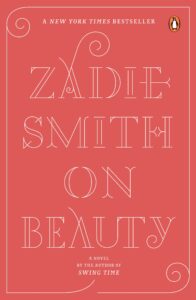
Zadie Smith, On Beauty
(Penguin Books)
Zadie Smith’s On Magnificence is a layered household story, and an homage to E.M. Forster’s Howard’s Finish, set within the 21st century in a Harvard-Cambridge-esque neighborhood, the place Smith has a variety of enjoyable puncturing educational tradition. The Belsey household—Howard is a white British artwork historian, married to Kiki, a black American and a nurse, and their three young-adult children—are all of the sudden pressured into contact with the Kipps household—Monty Kipps is a right-wing educational and Christian pontificator, and rival to Howard, and Monty’s spouse Carlene a serene and perplexing presence. (For Howards Finish followers, Kiki Belsey takes the sympathetic Margaret Schlegel function, and Howard and the three children share points of impulsive youthful sister Helen Schlagel.) Howard Belsey is attempting to maintain his marriage collectively after an affair, and flailing at work. Kiki is the extra severe, less-satirical coronary heart of the novel, and as she decides whether or not to go away Howard, she’s drawn to the mysterious Carlene Belsey. As Kiki and Howard wade by way of their crises, each come of age, aside and collectively, in sudden methods.
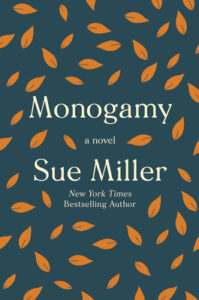
Sue Miller, Monogamy
(Harper Perennial)
In Sue Miller’s novel Monogamy, Annie and Graham have made a great life in Cambridge, MA, Graham because the gregarious proprietor of a thriving neighborhood bookstore and Annie as an artist; they’ve been married for thirty years and have a grown daughter in med faculty. Graham has a son by his first marriage, and each Graham and Annie are pleasant with Graham’s first spouse. However after Graham dies all of the sudden, Annie goes from almost-catatonic deep mourning to studying a horrible secret about Graham, and eventually to a brand new sense of herself, her husband, and her marriage. As its title suggests, Monogamy is a partly a layered have a look at the problems of an extended marriage, however at its coronary heart, it’s the story of a lady who finds a really totally different understanding of herself and her life after her husband dies too quickly.

Christina Clancy, Shoulder Season
(St Martin’s Press)
Set in 1981 with a present-day body narrative, Shoulder Season tells the story of Sherri Taylor, who at nineteen will get a job as a Playboy bunny at a Playboy resort on a Wisconsin lake (sure, there was a Playboy resort on the shore of Lake Geneva, WI). Naïve and lonely, Sherri makes some poor selections that finish in a tragic accident, and he or she flees the resort for California, the place she lets her life careen uncontrolled. It’s not till a few years later, when she’s virtually sixty however nonetheless haunted by the accident and dwelling a half-life, that she’s drawn again to Wisconsin and begins to face probably the most troublesome moments of her youth. And that’s when she’s lastly freed to turn into herself.
___________________________
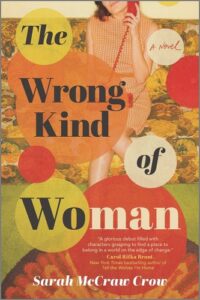
Sarah McCraw Crow’s The Wrong Kind of Woman is obtainable now in paperback.
[ad_2]
Source link


Recent Comments